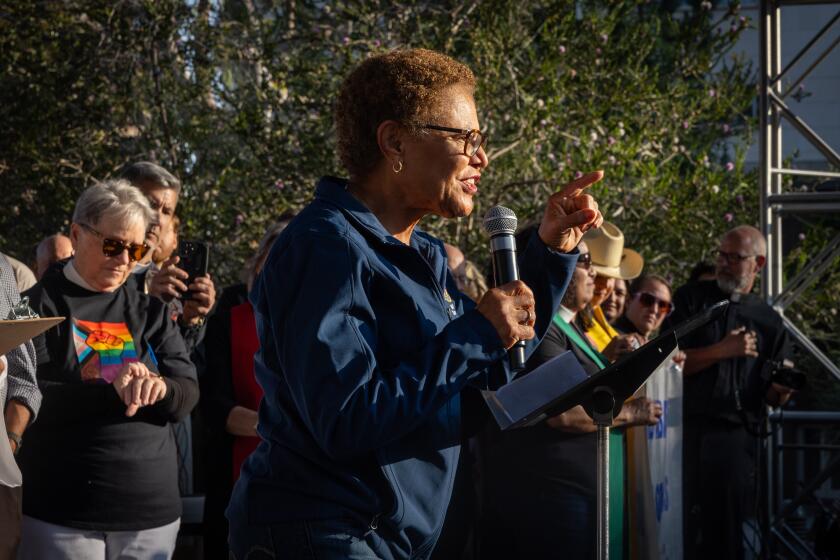HMO Reform Far From Done
- Share via
Gov. Gray Davis has crafted an ambitious plan to beef up state oversight of managed care, but it leaves some important areas unaddressed. Davis, whether or not he signs the bills heading to his desk, will have to provide focused leadership on two issues:
* Nursing ratios. Years of managed care cost-cutting have left California last in the nation in the ratio of registered nurses to patients, and surveys show that nurses, burned out by high hospital caseloads, are leaving the state or the profession.
California mandates nurse-to-patient ratios in operating rooms and intensive care wards; a bill by Assemblywoman Sheila Kuehl (D-Santa Monica) would require the state to establish minimum ratios elsewhere in hospitals by Jan. 1, 2001.
That timetable might be too ambitious, given a lack of agreement over what is meant by adequate staffing in different parts of a hospital. But if the governor vetoes the legislation, he should at least require hospitals to overhaul their method for determining how many nurses should be assigned on a shift. Hospitals designed the system in 1997 to dissuade legislators from imposing ratios, but health experts criticize its patchy implementation, subjectivity and lack of public accountability. The current situation, in which veterinary hospitals have minimum nursing staff ratios but human hospitals don’t, is untenable.
* Physician payments. Squeezed by declining payments from managed care plans, about three-quarters of the state’s physician-owned medical groups are teetering toward bankruptcy. This week, the Legislature is expected to send Davis a bill by Sen. Jackie Speier (D-Daly City) that offers a solution: requiring all managed care plans to show the state that the per-patient rates that they pay physician groups each month are adequate to cover the doctors’ costs of providing contracted care.
In recent days the health care industry has been throwing do-nothing arguments at Davis. Hospitals, for example, have argued that reducing nurse-patient ratios would be difficult given the state’s current nurse shortage. But in fact the shortage is largely due to the current grueling workloads. At the very least, Davis needs to put such lame arguments aside and help devise real solutions.
More to Read
Get the L.A. Times Politics newsletter
Deeply reported insights into legislation, politics and policy from Sacramento, Washington and beyond. In your inbox twice per week.
You may occasionally receive promotional content from the Los Angeles Times.










